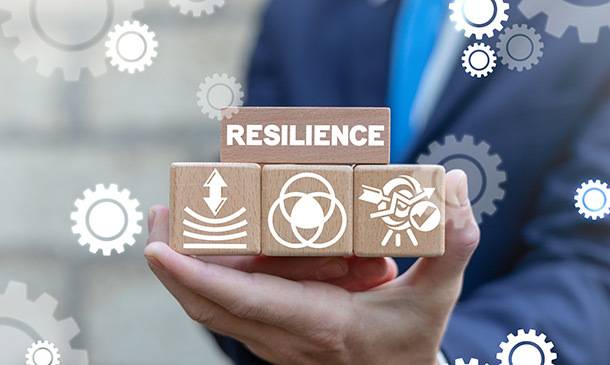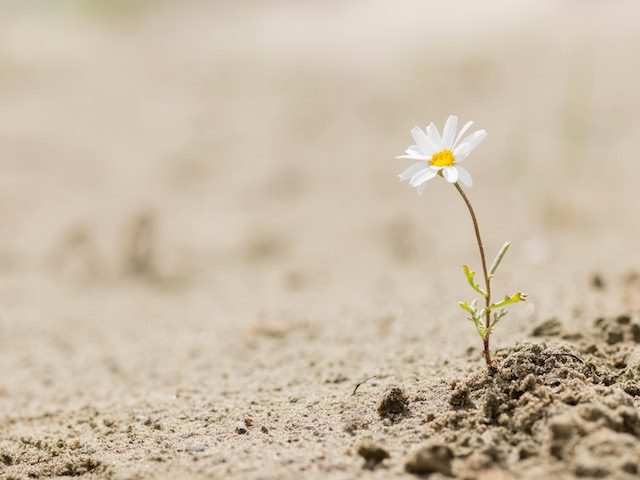
تحقیق تاب آوری چیست؟ با انجام تحقیق در مورد تابآوری و معنای آن، راههای جدیدی را کشف میکنیم که از طریق آن افراد میتوانند تابآوری را درک کنند، تابآوری عاطفی ایجاد کنند و از آن برای ایجاد تغییراتی به سمت عدالت اجتماعی استفاده کنند.
مرکز تاب آوری برای عدالت اجتماعی
فهرست عناوین
تحقیق تاب آوری چیست؟
اولا – تاب آوری چیست؟
تحقیق تاب آوری چیست؟ از نظر سلامت انسان و جامعه، تابآوری به ابزاری اطلاق میشود که از طریق آن نسبت به ناملایمات واکنش مثبت نشان میدهیم.
با انجام تحقیق در مورد تابآوری و معنای آن، راههای جدیدی را کشف میکنیم که از طریق آن افراد میتوانند تابآوری را درک کنند، تابآوری عاطفی ایجاد کنند و از آن برای ایجاد تغییراتی به سمت عدالت اجتماعی استفاده کنند.
وقتی به طور گسترده میپرسیم «تابآوری به چه معناست؟»، تعاریف شامل احساس بازگشت، بازگشت از مشکلات، اما همچنین رویارویی و تغییر آن مشکلات است. با انجام تحقیقات تاب آوری، ما در حال کار با کل جوامع در توسعه تئوری های قوی هستیم که تغییرات معنی داری را ایجاد می کند.
در میان تعاریفی که اغلب از تابآوری نقل میشود و معنای تابآور بودن، «توسعه مثبت علیرغم ناملایمات» (لوتار، ۲۰۰۳) یا «توانایی مقاومت در برابر چالشهای مخرب زندگی»، تقویتشده و کارآمدتر است (والش، ۲۰۰۸). در حالی که برای آن ماستن، تاب آوری عبارت است از «انطباق مثبت با ناملایمات علیرغم تهدیدهای جدی برای سازگاری یا توسعه».
رویزمن، پادرون و همکارانش در سال ۲۰۰۲ گفتند:
تاب آوری یک ویژگی نوظهور از مجموعهای از سیستمهای حفاظتی سازمانیافته سلسله مراتبی است که به طور انباشته اثرات ناملایمات را مهار میکند و بنابراین به ندرت میتواند به عنوان یک ویژگی ذاتی افراد در نظر گرفته شود. (وضعیت پیوست امن کسب شده در گذشته نگر و آینده، رویزمن و همکاران، ۲۰۰۲، ص۱۲۱۶)
به این درک از چیستی و چرایی تابآوری، میتوانیم مواردی را که پروفسور انجی هارت و همکارانش از طریق تحقیقات تابآوری در مرکز تابآوری برای عدالت اجتماعی دانشگاه برایتون تشخیص دادهاند اضافه کنیم:
غلبه بر ناملایمات، در حالی که به طور بالقوه تغییر می کند، یا حتی به طور چشمگیری، (جنبه های) آن ناملایمات را تغییر می دهد.» (تحقیق و تمرین تاب آوری با رویکرد نابرابری، هارت و همکاران، ۲۰۱۶، ص.۳)

حرکات تاب آور معنی دار عبارتند از:
انواع چیزهایی که ما باید انجام دهیم (مانند رویدادها، استراتژی های فرزندپروری، روابط، منابع) برای کمک به کودکان در مدیریت زندگی در شرایط سخت. به علاوه روشهای فکر کردن و عملی که اگر میخواهیم اوضاع را برای کودکان بهتر کنیم، خودمان به آن نیاز داریم. (کمک به بازگشت نیازهای پیچیده به کودکان: درمان تابآور (TM) برای والدین و متخصصان، Aumann & Hart، ۲۰۰۹، ص ۱۱)
با این حال، تحقیقات نشان میدهد که اندازهگیری تابآوری دشوار است، میتواند لغزنده باشد و با یادگیری بیشتر، تفکر تغییر میکند.
جزئیات چگونگی تغییر روشی که تحقیقات تاب آوری می تواند به ارائه سلامت و عدالت اجتماعی به جوامع کمک کند توسط دانشگاهیان دانشگاه برایتون در صفحات ما در مرکز تاب آوری برای عدالت اجتماعی انجام می دهیم را بررسی کنید.
امروزه خانواده ها در معرض سطوح بالایی از استرس روزانه قرار دارند و بروز افسردگی دوران کودکی در حال افزایش است. با وجود تمام تلاشهایمان، نمیتوانیم جلوی ناملایمات و استرسها را بگیریم. با این حال، میتوانیم با تغییر نحوه تفکر خود در مورد چالشها و ناملایمات، یاد بگیریم که تاب آورتر باشیم. کوردیچ هال و پیرسون، ۲۰۰۶، ص۶۳.
تحقیق تاب آوری به عنوان جست و جوی عدالت اجتماعی
تحقیق در مورد معنای تابآوری و معنای تابآور بودن، دانشگاهیان و محققان جامعه را به تحقیقی سوق میدهد تا بفهمند برای آن افراد – کودکان، خانوادهها، بزرگسالان آسیبپذیر و کارگران – که به طور مثبت خود را با سختیها وفق میدهند، چه اتفاقی میافتد.
محققان مرکز تابآوری عدالت اجتماعی دانشگاه برایتون با ایدههای متعدد و در حال تغییر درباره اینکه تابآوری به چه معناست و تابآوری میتواند به چه معنا باشد، کار میکنند. کار ما، در بریتانیا و در سراسر نقاط مختلف جهان، جوامعی را گرد هم می آورد که می توانند به این سوال پاسخ دهند: تاب آوری ما چیست، و چگونه می توانیم به جوامع مختلف کمک کنیم تا تاب آوری خود را در برابر چالش های مشترک و فردی ایجاد کنند؟
برای مرکز تحقیقاتی تابآوری برای عدالت اجتماعی و شبکه اجتماعی آن Boingboing، تابآوری در مواجهه با ناملایمات فقط مربوط به منابع روانشناختی درونی یا ویژگیهای ذاتی فرد نیست. این موضوع شامل ترکیبی از “طبیعت” (آنچه کودک با آن متولد می شود) و “پرورش” (آنچه آنها یاد می گیرند و در طول راه ارائه می شوند) می باشد.
محققان ما – دانشگاهیان و جامعه وسیعتر – به دنبال تبدیل تابآوری و درمان تابآوری به یک درمان تعبیهشده هستند، درمانی که در کل جوامع برای بهبود آینده از طریق شیوههای تابآور کار میکند. (Hart, A., & Blincow, D., with Thomas, H. (2007). درمان تاب آور: کار با کودکان و خانواده ها. لندن: Brunner Routledge.)
پروفسور مایکل اونگار تعریفی از تاب آوری ارائه می دهد: «تامین کافی منابع بهداشتی لازم برای دستیابی به نتایج خوب علیرغم تهدیدهای جدی برای سازگاری یا توسعه.» (Ungar, 2005, p. 429). پروفسور اونگار تعریفی آشنا از ماهیت پویای سازه تاب آوری ارائه کرده است. یعنی توانایی کودک یا جوان برای هدایت و مذاکره برای سیستم های پشتیبانی موجود است.

آن راثبون از مرکز تاب آوری برای عدالت اجتماعی دانشگاه برایتون در این مورد میگوید: «کودکان و جوانان اگر نتوانند ببینند این سیستمهای حمایتی چه کسی، چه چیزی و کجا هستند، نمیتوانند راه خود را برای حمایت و مذاکره بروند. خدمات نه تنها باید در دسترس باشند، بلکه باید در مورد آنها شناخته شده، قابل مشاهده، به موقع، استقبال کننده و الهام بخش باشند.» (به پست Anne Rathbone برای Boingboing، گزارش کنفرانس اروپایی اروپایی در مورد تاب آوری در آموزش، ژوئیه ۲۰۱۸ مراجعه کنید.)
برای محققان مرکز تاب آوری برای عدالت اجتماعی، تلاش برای تأثیرگذاری بر شرایطی که وضعیت زندگی روزمره کودکان و خانواده ها را شکل می دهد، بخش اصلی تمرین مستقیم است.
ایده هایی برای کار تاب آوری با تخیل نابرابری عبارتند از:
- تاب آوری از طریق افزایش آگاهی به وسیله کار با افراد یا گروه ها در رابطه با نابرابری های مختلفی که ممکن است با آنها مواجه شوند.
- تاب آوری از طریق یادگیری رهایی بخش، آموزش بزرگسالان و آموزش حقوق قانونی.
- تاب آوری از طریق بسیج جوامع، سازماندهی محله و توسعه جامعه.
- تاب آوری از طریق کار حمایتی، فعالیت مدنی یا حمایت از دیگران می تواند الهام بخش تحول باشد.
- تاب آوری از طریق مذاکره، توسعه و استفاده از مهارت های متقاعدسازی.
- تاب آوری از طریق لابی کردن، مبارزات انتخاباتی و درک مراحل سیاست گذاری و قانون گذاری و بنابراین، کجا باید تلاش خود را متمرکز کنید.
- تاب آوری از طریق تولید مشترک، توزیع رهبری، اقدام پژوهشی مشارکتی.
این تحقیق در هسته خود تولید مشترک را دارد و در جهت درک احساس تاب آوری مایکل اونگار به عنوان مقاومت کار می کند.
نه چیزی که همه کودکان به آن نیاز دارند، منعکس کننده جنبه هایی از چارچوب تاب آوری است: ساختار، پیامدها، ارتباطات والدین و فرزند، بسیاری از روابط قوی، هویت قدرتمند، احساس کنترل، احساس تعلق / معنویت / هدف زندگی، حقوق. و مسئولیت ها، ایمنی و پشتیبانی.
هنگامی که او از چالش برانگیز بودن نابرابری ها و تمرکز بر حاشیه نشین ترین کودکان صحبت می کند، به واقع در مورد تاب آوری صحبت می کند – و در مورد اعتقاد و تلاش برای – تغییرات اجتماعی و تولید مشترک. کار با کسانی که بیشترین تأثیر را دارند، کلید این امر است.
این موضوع اگر به خوبی انجام شود، تولید مشترک، به هر طریقی، فرصت هایی را برای توسعه همه اینها در افراد و گروه ها فراهم می سازد. تولید مشترک را می توان به عنوان یک روش درمانی تعبیه شده با پیوندهای تکراری بین توسعه فردی و اجتماعی و قدرت “تغییر شانس” در نظر گرفت.
در حال حاضر تعاریف تاب آوری، تا حدی به لطف تحقیقات تاب آوری موفق، با هم ادغام شده اند، به طوری که آنها شروع به تأکید بر آنچه که مردم واقعاً می توانند برای بهبود شانس برای کسانی که دوران سختی را در آن می گذرانند انجام دهند، شروع کرده اند. همانطور که در بالا گفته شد، برای مرکز تاب آوری برای عدالت اجتماعی، یک تعریف کاربردی از تاب آوری است:
غلبه بر ناملایمات، در حالی که به طور بالقوه تغییر می کند، یا حتی به طور چشمگیری، (جنبه های) آن ناملایمات را تغییر می دهد.» ( متحد کردن تحقیق و تمرین تاب آوری با رویکرد نابرابری، هارت و همکاران، ۲۰۱۶، ص.۳)
بسیاری از سازمانها از تحقیقات آکادمیک برای توسعه روشهای کار با دیگران برای کمک به انجام حرکتهای تاب آور در زندگی خود استفاده میکنند. کار تحقیقاتی تاب آوری ما بخشی از این است. به عبارت دیگر، “شکست دادن شانس، در عین حال تغییر شانس”.
What is Resilience Research
Firstly – What is Resilience
In terms of human health and society, resilience refers to the means through which we make a positive reaction to adversity
By conducting research into resilience and its meaning, we discover new ways in which people can understand resilience, build emotional resilience and use this to make changes towards social justice
When we ask widely “what does resilience mean?”, definitions include the sense of rebounding, of bouncing back from problems, but also confronting and changing those problems. By conducting resilience research we are working with whole communities in developing robust theories that bring about meaningful change
Among the most frequently quoted definitions of resilience, and what it means to be resilient, are “positive development despite adversity” (Luthar, 2003) or “the ability to withstand and rebound from disruptive life challenges, strengthened and more resourceful” (Walsh, 2008). While for Ann Masten, resilience is, ‘Positive adaptation to adversity despite serious threats to adaptation or development’.
Roisman, Padrón and colleagues said in 2002
Resilience is an emergent property of a hierarchically organised set of protective systems that cumulatively buffer the effects of adversity and can therefore rarely, if ever, be regarded as an intrinsic property of individuals. ( Earned-Secure Attachment Status in Retrospect and Prospect, Roisman et al., 2002, p.1216)

To these understandings of what resilience is, we can add those which Professor Angie Hart and colleagues have recognised through resilience research in the University of Brighton’s Centre of Resilience for Social Justice:
Overcoming adversity, whilst also potentially changing, or even dramatically transforming, (aspects of) that adversity.’ (Uniting Resilience Research and Practice With an Inequalities Approach, Hart et al., 2016, p.3)
Meaningful resilient moves are
The kinds of things we need to make happen (e.g. events, parenting strategies, relationships, resources) to help children manage life when it’s tough. Plus ways of thinking and acting that we need ourselves if we want to make things better for children. (Helping children with complex needs bounce back: Resilient Therapy (TM) for parents and professionals, Aumann & Hart, 2009, p. 11)
Yet, research recognises that resilience is hard to measure, can be slippery to pin down and that thinking shifts as we learn more
Explore the details of how the University of Brighton’s academics have been changing the way resilience research can help bring health and social justice to communities in our What we do at the Centre of Resilience for Social Justice pages
Research into the meaning of resilience and what it means to be resilient leads our academics and community researchers on an investigation to understand what takes place for those people – children, families, vulnerable adults and workers – who positively adapt to hardship
The researchers in the University of Brighton’s Centre of Resilience for Social Justice work with multiple and changing ideas as to what resilience means and what resilience can mean. Our work, in Britain and across different parts of the globe, brings communities together that can answer the question together: what is our resilience, and how can we help diverse communities find and build their resilience to shared and individual challenges
For the research Centre of Resilience for Social Justice and its social network Boingboing, resilience in the face of adversity is not just about an individual’s inner psychological resources or innate characteristics; it involves a combination of ‘nature’ (what a child is born with) and ‘nurture’ (what they learn and are offered along the way). Our researchers – academics and the wider community – seek to make resilience and resilient therapy an embedded treatment, one which works across whole communities to improve futures through resilient practices. ( Hart, A., & Blincow, D., with Thomas, H. (2007). Resilient Therapy: Working with children and families. London: Brunner Routledge.)
Professor Michael Ungar gives a definition of resilience as: ‘Adequate provision of health resources necessary to achieve good outcomes in spite of serious threats to adaptation or development.’ (Ungar, 2005, p. 429). Professor Ungar has given a now familiar definition of the dynamic nature of the construct of resilience; that is, that it is the ability of the child or young person to navigate to, and negotiate for, support systems that are available
Anne Rathbone from the University of Brighton’s Centre of Resilience for Social Justice reflects on this: “children and young people can’t navigate their way to support and negotiate it if they can’t see who, what and where these support systems are. Services need to be not just available, but known about, visible, timely, welcoming, and confidence-inspiring.” (See Anne Rathbone’s, post for Boingboing, Report from the European European Conference on Resilience in Education, July 2018.)
For researchers in the Centre of Resilience for Social Justice, trying to influence the conditions that shape the circumstances of children and families’ daily lives is a core part of direct practice. Ideas for resilience-working with an inequalities imagination include
- Resilience through consciousness-raising by working with individuals or groups in relation to the various inequalities they might face
- Resilience through emancipatory learning, adult education and legal rights education
- Resilience through mobilising communities, neighbourhood organisation and community development
- Resilience through advocacy work, civic activism or advocating for others can inspire transformation
- Resilience through negotiating, developing and using persuasion skills
- Resilience through lobbying, campaigning and understanding the stages of policy and law-making and, thus, where to focus your effort
- Resilience through co-production, distributing leadership, participatory action research
This research has co-production at its core, working towards understanding Ungar’s sense of resilience as resistance. His Nine Things All Children Need, are reflective of aspects of the Resilience Framework: Structure, Consequences, Parent-child connections, lots of strong relationships, a powerful identity, a sense of control, a sense of belonging/spirituality/life purpose, rights and responsibilities, safety and support. When he talks about challenging inequalities and focusing on the most marginalised children he is talking about – and in believing in, and striving for – social change and co-production. Working with those most affected is key to this

Done well, co-production offers, in one way or another, opportunities for all these to be developed in individuals and groups. Co-production can be viewed as embedded therapeutic practice with the iterative links between individual and community development and the power to ‘change the odds’.
Definitions of resilience have now merged, thanks in part to successful resilience research, so that they are starting to emphasise what people can actually do to improve the odds for those having a particularly tough time of it. For the Centre of Resilience for Social Justice a working definition of resilience is, as stated above
“Overcoming adversity, whilst also potentially changing, or even dramatically transforming, (aspects of) that adversity.” ( Uniting Resilience Research and Practice With an Inequalities Approach, Hart et al., 2016, p.3)
Many organisations are using academic research to develop ways of working with others to help make resilient moves in their lives. Our resilience research work is part of this. In other words, “Beating the odds, whilst also changing the odds”

